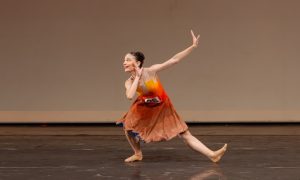It sounds like a classic case of Recruiting 1.01. Experienced, familiar with the organisation, up-to-date expertise. Tick those boxes and…welcome to your new role as Artistic Director of the Royal Academy of Dance (RAD).
Straight from dancing Des Grieux in The Royal Ballet’s 2024 rendition of Sir Kenneth MacMillan’s Manon, Australian-born dancer and production company chief, Alexander Campbell, will move into the AD chair at one of the world’s premier dance training institutions.

Aside from the obvious HR coup, Campbell’s switch from stage to school has a satisfying sense of symmetry. The story, as told by its protagonist, goes like this: “I was introduced to ballet by my grandmother, who had travelled to London from Sydney at 15 on a scholarship to continue her training. She then had a career with Ballet Rambert back in the 1950s, and then went on to become a Royal Academy of Dance teacher and examiner. Then, when I showed an interest, she showed me videos of Mikhail Baryshnikov. I was hooked. I wanted to dance like that.”
Like his grandmother, Campbell stepped through the RAD syllabus. “I did all the exams up to Advanced 2 before joining The Royal Ballet School after competing at Prix de Lausanne.”
Thereafter, his CV is sprinkled with gold dust. The 2003 Genée (now Fonteyn) International Ballet Comp silver medallist was soon dancing with the Birmingham Royal Ballet. In 2011, he moved south to join The Royal Ballet as a soloist, before graduating to Principal Artist in 2016. Throughout his much-lauded career, he danced many of the artform’s most iconic roles. Romeo, The Prince in Nutcracker and Albrecht in Giselle to name a few.
In fact, when Dance Informa spoke with Campbell, he was in the middle of his run in Manon, a few days from the end of his time as a performer. Even with an exciting new challenge waiting in the wings, the reality had not yet sunk in. As he said, “There’s a part of me that’s disassociating from it because I think if I truly stopped to take in the enormity, that these are my last performances, I might struggle to focus on the task at hand.”
For those with short-dated careers – athletes, dancers, etc – the pivot to ‘retirement’ can be especially fraught. “I’ve honestly never thought or imagined what my final performance might be or how it might feel,” Campbell muses. “Let’s see how I feel when the curtain comes down…I reckon there’ll be a few tears.”
Once they have dried, though, the space vacated by the stage will be filled by the complexities of working at the helm of an international organisation that conducts examinations for a quarter of a million students each year and has 13,000 members across 85 countries.
So, what is it that the new Artistic Director will actually do at RAD? “I’ll be the most senior artistic voice,” Campbell explains. “I’ll be working with an incredible team of people with huge amounts of knowledge and passion for the artform, and together we’ll be responsible for things like the syllabus and the creation and delivery of professional development opportunities for our members.”

In this, we glimpse something of the Royal Academy’s broader objective. More than just exams and certificates, he argues, “RAD has the opportunity to shape how people engage with ballet and dance all over the world.”
Having first encountered RAD as a child in Sydney, Campbell now finds himself in the hot seat at their Battersea headquarters. Cue the aforementioned symmetry. As an alum, he has a customer perspective on the academy’s offering. It is detailed knowledge that he will soon put to good use.
Though grateful for the impact that the RAD has had on his career arc, he knows that nothing is given. Expectations and aesthetics change. Artforms evolve. Training organisations need to be alive to shifting terrain.
As he ponders his final few nights on stage and his future with one of the biggest dance brands on the planet, Campbell breaks it down. “I just want to make sure the pathways I had continue to exist. But I’m equally passionate about providing people an exceptional and positive first interaction with ballet and dance, and to help make sure that there are many different ways to engage with and enjoy dance.”
By Paul Ransom of Dance Informa.














